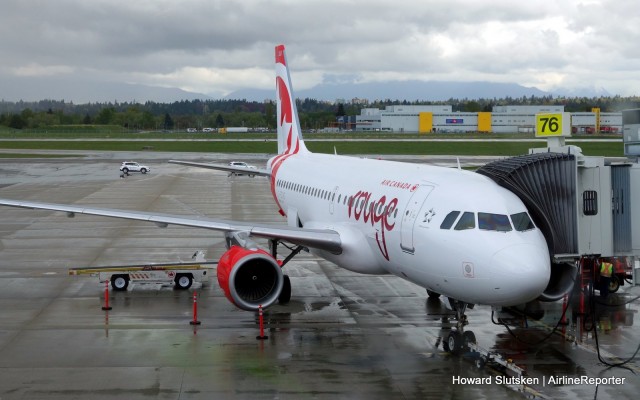
Air Canada rouge’s inaugural YVR-LAS Airbus A319 flight at the gate on a rainy Vancouver morning
You may have read the recent commentary and analysis by AirlineReporter’s Bernie Leighton, “You Get What You Pay For Rant: Why Economy Class Is What It Is.” I certainly did. It seemed fitting, then, that just a couple of days later, I was invited to Vancouver International Airport (YVR) for Air Canada rouge‘s first Western Canada flight.
Air Canada rouge is an “airline within an airline”, and is part of the Air Canada Leisure Group along with inclusive-tour operator, Air Canada Vacations. The airline is positioned as Air Canada’s “Leisure” carrier, intended to get passengers to their vacation destinations. Air Canada rouge launched last July 1st with flights from Toronto (YYZ) and Montreal (YUL) to Europe, the Caribbean, Mexico, and the U.S. In addition to specific vacation travel, Air Canada is hoping to make its unprofitable routes financially viable by a transfer to Air Canada rouge, which has lower operating costs. Bernie talked all about that, and CASMs and RASMs, in his rant.
By the end of 2014, Air Canada will have transferred 47 routes to rouge. Another seven routes new to the AC network will be operated exclusively by rouge. The just-announced Western Canada routes include YVR to Las Vegas, Los Angeles, San Francisco, Phoenix, and seasonal service to Anchorage. From Calgary, flights will go to Las Vegas and Los Angeles.
The Air Canada rouge fleet is made up of Airbus A319s and Boeing 767-300ERs, transferred from Air Canada’s mainline fleet. As of the end of April, there were 15 A319s and four 767s flying for the leisure carrier. Ultimately, rouge may have up to 30 A319s and 20 767s, with the 767s coming into the fleet as Air Canada receives its new 787 Dreamliners.
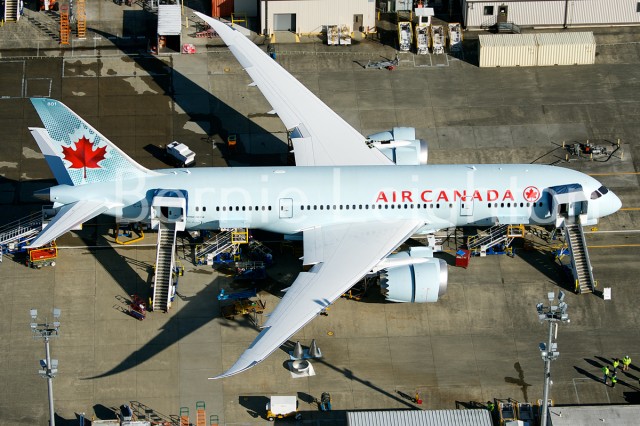
C-GHPQ, Air Canada’s first 787-8 on the ramp at KPAE. Photo – Bernie Leighton
I was up over PAE this morning, going hunting. Look at this wonderful new aircraft for Air Canada. Best looking 787 yet in my opinion.
The Montreal-based airline should be taking delivery of this frame some time next month.
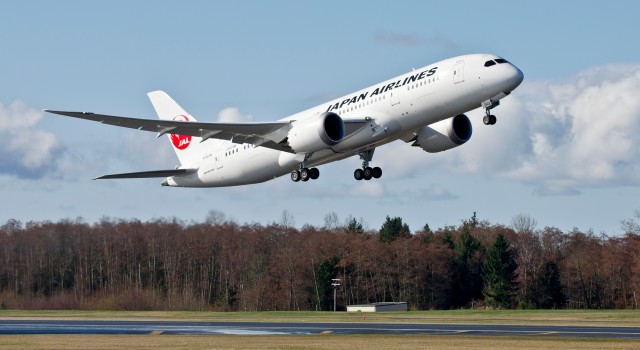
HI RES IMAGE (click for larger). JAL’s Boeing 787 Dreamliner taking off at Paine Field – Photo: Boeing
Last week, Japan Airlines announced that it will begin Boeing 787 service to Vancouver International Airport (YVR) on Monday, February 3, 2014. This will be the first scheduled arrival of a Dreamliner at YVR.
The JAL 787-8 will serve the YVR to Tokyo Narita (NRT) route, and will initially fly once per week on Mondays. Daily service will be in place by March.
We expect to see additional Dreamliner service at YVR this year, most noteably with Air Canada’s introduction of their 787-8 later in the spring. AC’s first of their 37-aircraft order, LN160, is to be registered as C-GHPQ and is currently in Position 2 of the Final Assembly Line at Boeing Everett.
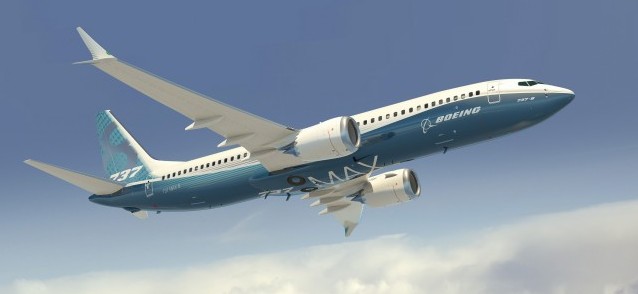
The Boeing 737 MAX 8 – Image: Boeing
Today, Air Canada, in a surprising move, has decided to replace their current Airbus narrowbody fleet with the offering from the competition – the Boeing 737 MAX.
They have ordered a total of 61 of the aircraft, with 33 going to the MAX 8 and 23 to the larger MAX 9. The “up to 109” part of the transaction comes from 30 purchase rights and 18 options. At list prices, the firm orders would be a transaction of over six billion dollars, but you better believe that the airline made a stellar deal for the planes.
“We are pleased to announce our agreement with Boeing for the purchase of 737 MAX aircraft as part of the ongoing modernization of Air Canada’s fleet,” said Calin Rovinescu, President and CEO of Air Canada. “Renewal of our North American narrowbody fleet with more fuel efficient aircraft is a key element of our ongoing cost transformation program and the enhanced passenger cabin comfort provided by the Boeing MAX will help us to retain Air Canada’s competitive position as the Best Airline in North America. Our narrowbody fleet renewal program is expected to yield significant cost savings. We have estimated that the projected fuel burn and maintenance cost savings on a per seat basis of greater than 20 per cent will generate an estimated CASM reduction of approximately 10 per cent as compared to our existing narrowbody fleet.”
By 2019, Air Canada plans to have an all Boeing long-haul fleet, and a majority Boeing short-to-medium haul fleet. Currently, the airline operates a fleet of 27 Airbus A319s, 36 A320s and 10 A321s.
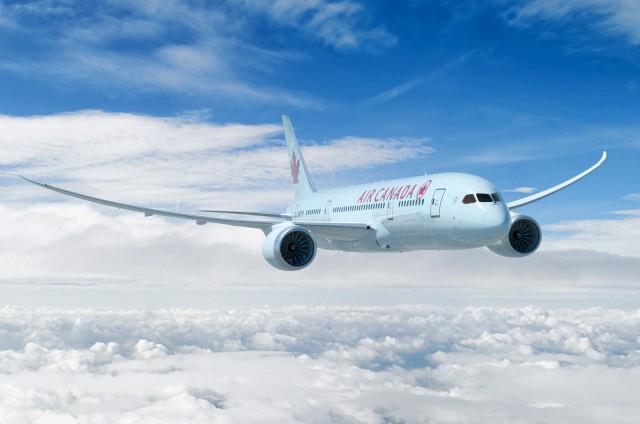
Air Canada Boeing 787-8 Dreamliner – love that wing! – Image: Air Canada
Air Canada has just released details of a new cabin design for their soon-to-be-received Boeing 787-8 Dreamliner. The first three aircraft will be delivered to Air Canada in the spring of 2014. The first AC routes to receive the 787 will start on July 1, 2014 from Toronto (YYZ) to Tel Aviv (TLV), and a new Air Canada route from YYZ to Tokyo-Haneda (HND). The Dreamliners will also fly on select domestic Canada and international flights on a “preview” basis as they come into the fleet, which we’ve seen with other new 787 operators.
Not unlike AC’s new 777-300s, the Dreamliners will have three cabins – International Business Class, Premium Economy, and Economy. The 787-8s will have a total of 251 seats (comparable to LOT Polish’s 787s, seating 252, which we featured earlier this year). Air Canada describes the 787’s cabin color palette of slate grey and neutral tones, accented with “Canadian red” and “celeste blue”, as being contemporary and sophisticated.
BONUS – Air Canada’s 787 Seating Chart
The 787’s Business Class isn’t like J-class in the new 777 or older AC planes. The new 787-8 configuration is a “reverse herringbone”, with four-across seating in a 1-2-1 setup, for a total of 20 lie-flat seats. AC’s older wide-bodies have a “herringbone” Business Class, where the seats face towards the aisle. Instead, the outer pods in the 787 will face the windows, and be angled towards each other in the middle of the cabin. I’m looking forward to seeing this setup; it isn’t easy to look out the window in the current J-class, and it’s challenging to chat with a partner when you’re both in the opposite-facing middle seats. The 787’s window seats might be a bit quieter, too, because your head won’t be up against the outer wall of the fuselage.




